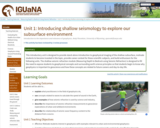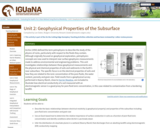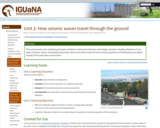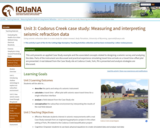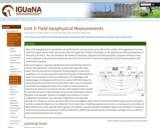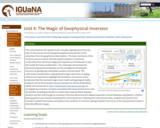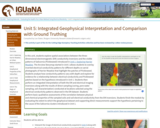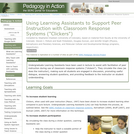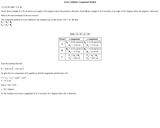Called the "Web-o-Cycles," groups of students are each assigned a different matter cycle to become deeply familiar with not only the internal components and interactions, but also possible connections to other cycles. For example, volcanic activity in the rock cycle also discharges sulfur into the atmosphere, which turn interacts with the water cycle in cloud formation. Connections such as these are made between posters of the cycles using colored yard, hooked on the appropriate nodes on each cycle and labeled by the nature of the interaction with the note cards hung on the yarn. In a short period of time, the classroom is a web of yarn, connecting each cycle to the others.
The next element of this activity attempts to capture elements of complex Earth systems, especially the concepts of equilibrium, hysteresis, power law relationships, and sensitive dependence. All lines connecting the cycles are held taut, representing an equilibrium condition. Small shifts in one cycle are compensated for by consequent shifts in other cycles. Selecting one of the interconnecting strands, tension is in introduced, first in small pulls which accumulate to imbalance and shift the cycles slightly. A single large pull in one strand, to the point of breaking the yarn, causes some lines to slacken, perhaps to the point that they cannot be easily restored to tautness without dramatic shifts in the connected cycles. Re-tightening the connections causes a shift in the cycles, which takes place quickly and assumes a slightly different but at least familiar pattern. Having students then share their observations of the process of pattern description-imbalances-shifts-new equilibrium allows them to recognize the dynamic nature of Earth systems interactions as well as to seek deeper understanding of hidden elements within the Earth system.
Materials needed:
At least four posters depicting detailed graphical representations of matter cycles, such as water, carbon, rock, nitrogen, sulfur, phosphorous, mounted on cardboard or another rigid material. Students should have available to them information on each cycle, depicting relative volumes of material in each cycle phase, residence times of the material in those phases, and the processes that drive changes from one phase to another;
At least one ball of yarn, in a different color, for each poster;
Note cards on which students will write a description of the individual processes used to link cycles;
Paper clips to hang the note cards on these connective strands.
(Note: this resource was added to OER Commons as part of a batch upload of over 2,200 records. If you notice an issue with the quality of the metadata, please let us know by using the 'report' button and we will flag it for consideration.)
